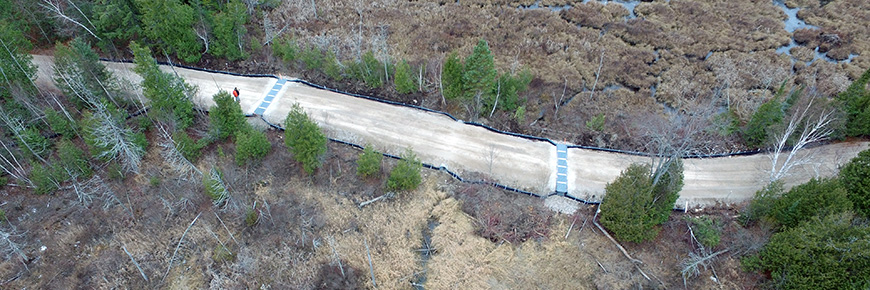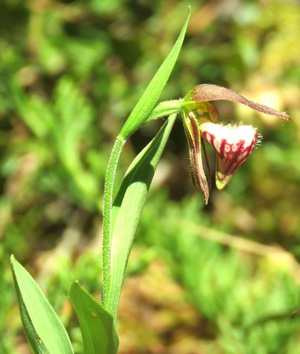
Research priorities
Bruce Peninsula National Park
Bruce Peninsula National Park (representing the Great Lakes – St. Lawrence Lowlands eco-region) and Fathom Five National Marine Park (representing the Georgian Bay marine region) were established as national parks in 1987. The combined parks feature limestone barrens (alvars), Niagara Escarpment cliff-edge forests, an isolated and genetically-distinct Black Bear population, an Eastern Massasauga Rattlesnake population, 43 species of orchids, extensive karst land form features, the largest contiguous forest in south-western Ontario, an inland lake system free of invasive species, the largest continuous population of Dwarf Lake Iris in Canada, the northern-most populations of Queen Snake, the largest hibernacula in the country for bats, and Canada’s largest collection of lacustrine (wave-cut caves).
Park research priorities are derived from needs identified in the Park Management Plan (an updated plan is scheduled for completion in 2022), the Multi-species Action Plan along with other key documents. Please read Parks Canada’s research permit requirements for details on the research permitting process. Parks Canada works closely with Indigenous groups across the country. In the spirit of reconciliation, research is conducted in cooperation with the Saugeen Ojibway Nation (SON). The two national parks lie within SON’s traditional territory. SON will determine whether research projects will incorporate their priorities and traditional ecological knowledge components, contextual Indigenous worldviews, ethics, values and processes. Parks Canada’s Research Coordinator will assist in making connections with SON.
Priority Research Interests

(Cypripedium arietinum)Key Research Priorities:
Working with Indigenous Partners
Support Offered to Researchers
Supplementary Research Interests
- Pathways of invasive species and map presence/absence - Impact of exotic helleborine, bittersweet nightshade on native flora.
- Ecological land classification for Upper Bruce ecosystem.
- Population viability analyses (Black Bear, Eastern Massasauga Rattlesnake).
- Extraordinary increases in visitation have occurred over the past 10 years, and the Visitor Use Management Framework (adopted from the US NPS) is being used to determine carrying capacities and management strategies for key visitor areas— we would like to better understand visitor expectations related to crowding, and explore additional management and monitoring strategies for protected areas facing high visitation pressures.
- Composition of non-native grasses on old fields.
- Ecology of Eastern Prairie-Fringed orchid population.
- Feasibility for cold-water stream restoration/enhancement/brook trout restoration in Willow Creek.
- Role of fire (or mechanical gaps) to rejuvenate red oak and jack pine forests; design restoration.
- Calculate historic type, frequency and intensity of major ecosystem disturbances.
- Sustainability of recreational fishery on inland lakes.
- Monitor changing hydrological patterns (beaver impoundments, karstic processes).
- Assess options and impacts of removing aquatic invasive species.
Contact Information:
Cavan Harpur and Tricia Robins, Research Coordinators
Address: 248 Big Tub Rd., Box 189, Tobermory, ON N0H 2R0
Email: Cavan Harpur and Tricia Robins
Phone: 226-668-0608 / 226-974-0261
Related links
- Date modified :